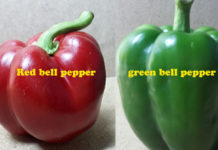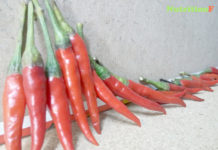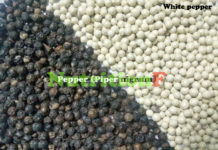Chili pepper (chile pepper, chilli pepper) or simply chilli is from the genus Capsicum, a member of Solanaceae family. This fruit has originated in the Americas thousands year ago and was called pepper because of its spicy was like pepper in Europe, as Christopher Columbus considered when he first encountered it in Caribbean in 15th century.
Chilli is now spread to many parts of the world as both food and medicine. Among the areas and countries where chilli is cultivated like America, Europe, Australia, India, Africa and Asia, India is the biggest producer, consumer and exporter of dry chili peppers with about 1 million tons per year. The biggest amount of fresh chili peppers comes from China.
Chili peppers have spicy or sweet flavor and contain large amount of Vitamin C, carotene (provitamin A), Vitamin B, B6, potassium, magnesium and iron, this fruit could be used in food and medicine.
Pepper types in general are varied in which chili pepper is similar. There are two main kinds of chili pepper: domesticated and wild chili pepper, which have many types each.
-
Domesticated chili peppers
Domesticated chili peppers include capsicum annuum, capsicum frutescens, capsicum chinense, capsicum pubescens, capsicum baccatum:
- Capsicum annuum: is the most popular domesticated chili pepper among these five above. It is a perennial plant with berry fruit, may have green, yellow or red color when ripe and mild to hot flavor. This group could be productive in warm and dry weather. It includes Poblano (also called Ancho or Chile Ancho), bell pepper, Cayenne, Cubanelle (or Cuban pepper), Chile de Arbol, Jalapeno, Mirasol, New Mexico pepper, Paprika, Pimiento (or cherry pepper), Pequin, Serrano, Squash, Peter pepper, Pasilla chile (or chile negro), Padron pepper, Mulato, Medusa, Jalapeno, Hungarian wax, Guntur sannam, Guajillo, Friggitello (also called Golden Greek pepper, Sweet Italian pepper or Tuscan pepper), Fresno, Facing heaven, Espelette, Dundicut, Chungyang red pepper, Cascabel (or rattle chili), Bird’s eye (or Thai chili).
- Capsicum frutescens: is a group of pepper that less popular than Capsicum annuum. Its plant is dense with small and pungent fruit. The fruit color could be yellow, bright-red or other colors depend on the area. This group includes African bird’s eye, Kambuzi, Malagueta, Siling labuyo and Tabasco.
- Capsicum Chinense (or yellow lantern chili): includes the hottest peppers types of the pepper with the unique heat and flavor. Its fruit has shape and different color from red, orange, yellow, even brown and purple. Capsicum Chinense could grow well and long in warm weather (it could be last for several years). It’s now grown widely in Caribbean, America, tropical and subtropical areas. There are different types of this group like: Adjuma, Aji dulce, Bhut jolokia, Carolina Reaper, Datil, Fatalii, Habanero, Hainan yellow lantern, Madame Jeanette, Naga Morich, Red Savina habanero, Scotch bonnet, Trinidad scorpion Butch T.
- Capsicum bubescens: the hairy leaves, black seed and the ability to withstand the cooler weather than other peppers make capsicum bubescens become the least widespread from other capsicum types. This capsicum is also isolated because it couldn’t pollinate with other domesticated capsicum species. Most of them are rarely cultivated and are now become scarce. There are Canario, Rojo, Peron, Orange and Rotoco Longo included in this species.
- Capsicum bacatum: also known as Aji. This genus fruit is different from other species by the hanging down fruit when ripe, and the flavor is fruity or like citrus. It’s used as spice in many sauces and dishes in Columbia, Ecuador and Peru.
2. Wild pepper
For wild pepper, there are many types are spread naturally to different areas by birds. Their fruits are commonly small and colorful in order to attract the birds easily. Some types that could be mentioned popularly: Buforum in Brazil, Cardenasii in Bolivia, Eximium in Bolivia and Argentina and some other wild peppers in Brazil, Venezuela, Colombia, Paraguay, Arhentina etc.









